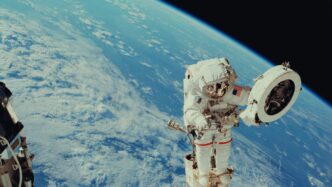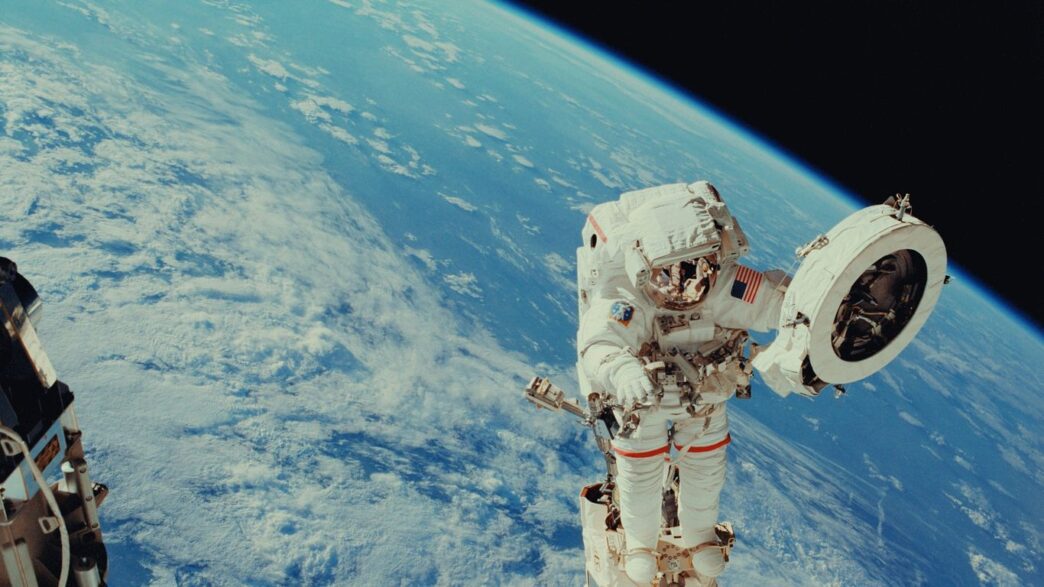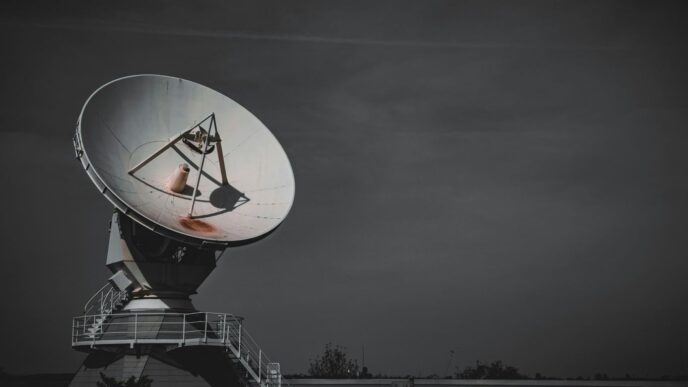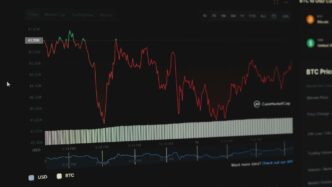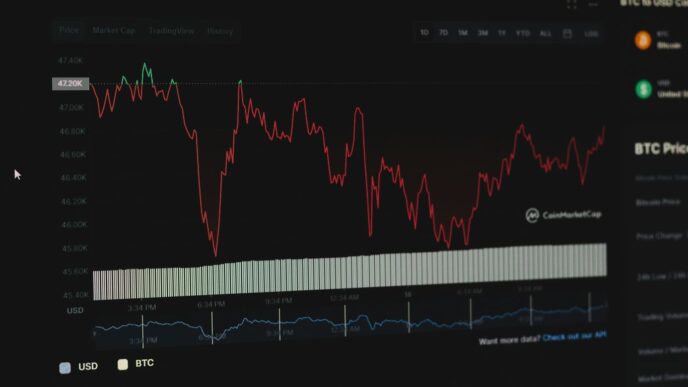Hey everyone! It’s that time again for some of the latest space news. There’s always so much happening out there, from brand new telescopes showing us things we’ve never seen before to scientists figuring out how planets and galaxies actually form. It can get pretty wild, but it’s also super interesting to see what’s going on beyond our own little corner of the universe. Let’s check out some of the coolest recent findings.
Key Takeaways
- The James Webb Space Telescope is giving us incredible views of the early universe, showing us starburst galaxies and massive star clumps that existed way back when.
- We’re learning more about how planets form, with some studies suggesting they might get going even before their stars are fully formed.
- New maps of the universe are revealing way more early galaxies than we expected, and we’re also finding huge structures like gas threads connecting galaxies.
- Black holes continue to be a source of mystery and wonder, with discoveries of multiple black holes in one galaxy and ideas that they could act like natural super-colliders.
- Exploration of our solar system is ongoing, with new insights into Mars’s subsurface and the strange conditions on Saturn’s moon Titan.
Unveiling the Early Universe With Webb
The James Webb Space Telescope (JWST) has been busy, and honestly, it’s like getting a whole new set of eyes on the universe. We’re seeing things from way back when, stuff that happened not too long after the Big Bang. It’s pretty wild.
Webb Space Telescope Reveals Starburst Galaxies That Lit Up the Early Universe
So, Webb looked way, way back, and guess what? It found galaxies that were just going nuts, making stars like crazy. These ‘starburst’ galaxies are super important because they show us what the universe was like when it was young and just getting started. These findings help us understand how the first stars and galaxies formed. It’s like finding the baby pictures of the cosmos.
NASA’s Webb Telescope Reveals Monster Star Clumps in Galactic Wreckage
In some of these ancient galaxies, Webb spotted these enormous blobs of stars. They’re not just little clusters; they’re massive. It seems like these huge clumps formed in the middle of galaxies that were maybe colliding or going through some serious drama. It makes you wonder how such big groups of stars could even come together in those chaotic environments.
Sand Clouds and Moon Nurseries: Webb’s Dazzling Exoplanet Reveal
And it’s not just about old galaxies. Webb is also giving us incredible views of planets forming around other stars. We’re talking about seeing disks of gas and dust where planets are being born. Some of these discoveries are really surprising, like finding planets with lots of carbon dioxide but hardly any water, or seeing what look like ‘moon nurseries’ where moons might be forming around giant planets. It’s changing how we think about how planets, and maybe even life, get started out there.
Galactic Mysteries and Planetary Formation

It turns out the universe is a pretty wild place, and we’re still figuring out how it all works. For instance, astronomers are looking at galaxies and seeing things that make them scratch their heads. They’ve found these massive star clumps in what looks like galactic wreckage, which is pretty wild to think about. It’s like finding a whole city in a pile of rubble, but on a cosmic scale. And then there’s the whole thing about giant planets. We used to think they took ages to form, but now it seems like they might be popping into existence much faster than we ever imagined. This suggests our models for how planets come to be might need a serious update. It’s a bit like realizing your recipe for baking a cake was all wrong, and it actually cooks in half the time.
We’re also seeing some really strange things happening in the center of our own Milky Way galaxy. It’s supposed to be a place where stars are born, but for some reason, the really massive stars seem to have a tough time getting going there. It’s a real head-scratcher. Meanwhile, out in the wider cosmos, scientists might have just spotted a brand new, giant planet in the process of forming. It’s like watching a baby galaxy being born, but for planets.
Here’s a quick look at some of the recent findings:
- Galactic Masterpieces: Astronomers have revealed images of galaxies that are just stunning, showing off a thousand different colors. It’s a reminder of the sheer beauty out there.
- Planet Formation Speed: New research indicates that giant planets could be forming much quicker than previously thought. This challenges our current understanding of planetary development.
- Star Formation Puzzles: There are still mysteries surrounding why massive stars struggle to form in certain galactic environments, like the center of the Milky Way.
- New Planet Spotted: There’s exciting news about a potential new giant planet being observed as it forms, offering a rare glimpse into this process.
Cosmic Structures and Distant Worlds
It’s pretty wild to think about, but the universe is a lot more connected than we often imagine. Scientists have recently found a huge thread of hot gas that links galaxies together. This thing is massive, like, 10 times the mass of our own Milky Way galaxy. It makes you wonder what else is out there, holding everything together.
Massive Thread of Hot Gas Found Linking Galaxies
This discovery is a big deal because it shows us how galaxies might interact over vast distances. It’s not just isolated islands of stars; there are these enormous structures connecting them. Imagine cosmic highways made of super hot gas, stretching for millions of light-years. It’s a whole new way of looking at the large-scale structure of the universe. This finding really helps us understand how matter is distributed across the cosmos. We’re talking about stuff that’s incredibly hot and energetic, and it’s been there for a very long time. It’s like finding the scaffolding that holds the cosmic city together. This massive thread of hot gas is a key piece of the puzzle in understanding how the universe evolved. It’s a reminder that there’s so much more to discover about the structure of the universe.
Largest-Ever Map of the Universe Reveals Early Galaxies
Speaking of mapping things out, astronomers have also put together the biggest map of the universe we’ve ever seen. This map shows us a ton of early galaxies, way more than we expected – about 10 times as many. It’s like getting a super detailed picture of the universe when it was still pretty young. This helps us see how galaxies formed and grew in those early days. It’s amazing how much detail we can get now with new telescopes and better ways of analyzing data. This map is a treasure trove for anyone studying cosmology.
Astronomers Observe Largest Ever Sample of Galaxies
And it’s not just about mapping; it’s also about observing. Scientists have looked at the largest group of galaxies ever studied. This massive sample lets them see patterns and trends that would be impossible to spot with smaller studies. They’re looking at galaxies that are billions of light-years away, giving us a glimpse into the universe’s past. It’s like having a giant photo album of cosmic history. The sheer number of galaxies observed means we can draw more reliable conclusions about how galaxies evolve over time. This kind of work is what helps us build a better picture of our place in the universe.
A Multitude of Protoplanetary Discs Detected in the Galactic Centre
Moving closer to home, in a sense, astronomers have also found a lot of protoplanetary discs right in the center of our own galaxy. These are the birthplaces of planets, so it means there are a lot of potential new solar systems forming around the supermassive black hole at the Milky Way’s core. It’s a busy place, with stars and gas and dust all swirling around. Finding so many of these discs suggests that planet formation might be more common in galactic centers than we previously thought. It’s a dynamic environment, and seeing these planet-forming regions there is pretty exciting. It makes you wonder what kinds of planets might be forming in such an extreme location.
Black Holes and Stellar Phenomena
Black holes, those enigmatic cosmic vacuum cleaners, continue to baffle and amaze scientists. Recent observations are painting a more complex picture of these gravitational titans. For instance, astronomers have spotted not one, but two supermassive black holes locked in a cosmic dance, actively consuming their host galaxy. This binary black hole system is a rare sight, offering a unique chance to study how these giants interact and influence their surroundings.
Then there’s the fascinating idea that black holes might be acting like natural supercolliders. By studying the extreme conditions near these objects, scientists hope to recreate the high-energy physics that might have occurred just after the Big Bang. It’s like having a cosmic laboratory right in our backyard, if your backyard is a few million light-years away.
We’re also learning that black holes aren’t just silent devourers of matter and light. Some of them appear to ‘sing,’ emitting signals that, when translated, reveal intricate details about their mass and spin. This ‘song’ is a direct consequence of the black hole’s interaction with the surrounding spacetime.
Here’s a quick look at some recent discoveries:
- Binary Black Holes: Two massive black holes found in the same galaxy, actively feeding.
- Natural Supercolliders: Black holes providing extreme environments for physics research.
- Black Hole ‘Songs’: Gravitational waves and other emissions revealing black hole properties.
- Rogue Black Holes: A black hole detected far from its galaxy’s center, spewing out energy.
These findings are pushing the boundaries of our understanding, showing that black holes are far more dynamic and complex than we ever imagined.
Exploring Our Solar System and Beyond
It’s pretty wild how much we’re still learning about our own cosmic neighborhood, isn’t it? Just when you think we’ve got a handle on things, a new discovery pops up, making us rethink what we thought we knew. Take Mars, for instance. Those streaky slopes we’ve seen? Turns out, they’re probably not flowing water after all, which is a bit of a bummer if you were hoping for signs of current life. Scientists are still digging into what’s happening under the Martian surface, though. They’re looking at rocks blasted out of craters, trying to piece together the planet’s history. It’s like a giant geological puzzle.
And then there’s Titan, Saturn’s big moon. NASA’s finding some really interesting stuff there. Those alien lakes? They might actually be creating primitive cells. How crazy is that? It makes you wonder what else is going on out there. Speaking of Saturn’s moons, one of them has this really weird, wobbly atmosphere. It acts kind of like a gyroscope, which is just bizarre. It’s a reminder that even the familiar planets and moons in our solar system hold so many secrets.
Here’s a quick rundown of some of the latest buzz:
- Mars’ Streaked Slopes: Likely not water flow, but scientists are still investigating the cause.
- Titan’s Lakes: Potential for creating primitive cells is a mind-blowing idea.
- Saturn’s Moon Atmosphere: A mysterious wobble that behaves like a gyroscope.
- Probing Martian Subsurface: Using ejected rocks to understand Mars’ past.
It just goes to show, there’s always something new to discover, even in our own backyard.
New Discoveries in Space News

It feels like every week there’s some wild new thing astronomers are finding out there. Just when you think we’ve got a handle on things, BAM! Something totally unexpected pops up. It’s pretty wild to think about how much is still out there, waiting to be seen.
Astronomers Just Found a Giant Planet That Shouldn’t Exist
So, get this: scientists have spotted a planet that’s way bigger than it should be, given how close it is to its star. It’s like finding a watermelon growing on a bonsai tree – just doesn’t make sense with our current ideas about how planets form. This thing is a gas giant, like Jupiter, but it’s orbiting its star much closer than we thought was possible for something so massive. This discovery is really making astronomers rethink the whole planet-building process. They’re looking at how planets might migrate or form in ways we haven’t even considered yet.
Ghost Star’s Planet Orbits Backward in a Bizarre Stellar System
Imagine a star that’s basically a cinder, a white dwarf, and it’s got a planet. Okay, weird, but not impossible. Now, what if that planet is orbiting the dead star in the opposite direction of how the star used to spin? That’s what’s happening here. It’s like a cosmic record scratch. This backward orbit suggests something pretty dramatic happened in the past, maybe a close encounter with another star or a massive gravitational tug-of-war that flipped things around. It’s a real head-scratcher for anyone trying to map out the life and death of star systems.
Hubble Just Snapped the Clearest-Ever Picture of a Rare Interstellar Comet
We’ve seen comets before, sure, but this one is special. It came from outside our solar system, a true visitor from another star. The Hubble Space Telescope managed to get an incredibly detailed look at it, showing us features we’ve never seen so clearly on a comet from so far away. Think of it like getting a super high-definition photo of a tourist who just flew in from another country – you see all the details you wouldn’t normally catch.
Cosmic Mystery Deepens as Astronomers Find Object Flashing in Both Radio Waves and X-Rays
This is the kind of thing that keeps astronomers up at night. They’ve found an object in space that’s sending out signals in two very different ways: radio waves and X-rays. What’s odd is that these signals seem to be linked, but the exact mechanism is a puzzle. It could be a type of black hole, a neutron star doing something strange, or something else entirely. It’s like hearing someone whisper and shout at the same time – you know something’s going on, but figuring out the ‘why’ is the tricky part.
The Journey Continues
So, what’s next in our cosmic adventure? It feels like we’re just scratching the surface, doesn’t it? From spotting brand new planets that shouldn’t even exist to figuring out how galaxies get their shapes, there’s always something new popping up. Telescopes like Euclid are giving us a much clearer picture of the universe, helping us understand things like dark matter and dark energy, which are still pretty mysterious. And it’s not just about looking out there; the tech we develop for space missions ends up helping us right here on Earth, in everything from our phones to medical scans. It’s pretty wild to think about. The universe is a huge, complicated place, and we’re getting better and better at peeking into its secrets. It’s exciting to imagine what we’ll find next.
Frequently Asked Questions
What new things has the Webb telescope shown us about the early universe?
The Webb Space Telescope is like a super-powered time machine! It’s letting us see galaxies that formed when the universe was very young. Some of these galaxies are like giant star factories, creating stars at an amazing speed. It’s also showing us huge clumps of stars and even revealing details about planets outside our solar system, like clouds made of sand and places where new moons might form.
Are giant planets really forming faster than we thought?
It seems like it! Scientists are finding evidence that big planets might be able to form much quicker than older ideas suggested. Some planets might even start forming before their stars are completely finished growing. This changes how we think about how planetary systems come to be.
Why are black holes so interesting to scientists?
Black holes are some of the most mysterious objects in space. Scientists are studying them because they can act like giant natural particle accelerators, smashing things together at incredible speeds. This could help us understand things like dark matter. Plus, some of the biggest black holes are behaving in unexpected ways, like two of them eating a galaxy together.
What’s new with Mars and its moons?
Scientists are still trying to figure out Mars. While some slopes might look like they have water flowing, it’s probably not the case. They’re also using rocks blasted from craters to learn more about what’s under the Martian surface. And on Saturn’s moon Titan, scientists think its strange lakes might be creating the building blocks for life. Another moon of Saturn has a weirdly wobbly atmosphere.
Have astronomers found any really weird planets or stars lately?
Yes, space is full of surprises! Astronomers have found giant planets that they didn’t think could exist based on how they formed. There’s also a planet orbiting a dead star backward, which is very unusual. And they’ve even spotted a rare comet that came from another star system, and a mysterious object that flashes in both radio waves and X-rays.
What is this ‘cosmic masterpiece’ and ‘galactic wreckage’ scientists are talking about?
When astronomers talk about a ‘cosmic masterpiece,’ they’re usually referring to a stunning image of a galaxy that shows off its beauty and complexity in amazing detail, like a work of art. ‘Galactic wreckage’ refers to galaxies that have collided or are in the process of falling apart, often revealing intense star formation and dramatic structures within them, like the ‘monster star clumps’ seen by the Webb telescope.

